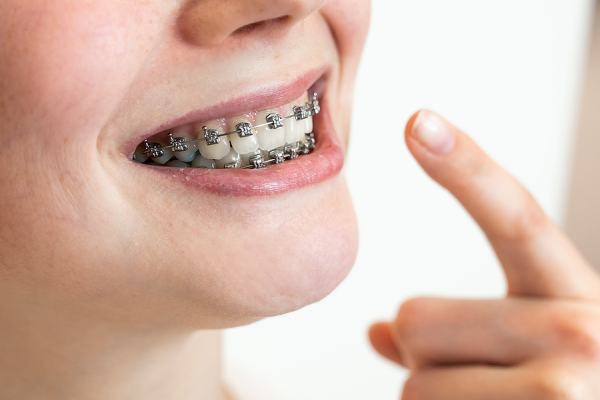
Braces are a common orthodontic solution in Singapore, with many different kinds available, such as metal, ceramic, lingual, and invisible braces. Depending on the type of orthodontic issues you have, your orthodontist will recommend the right type of braces. Always remember it is never too late to seek orthodontic treatment.
However, have you ever wondered how they work? In this article, we will explore traditional metal braces and how each component functions in helping you achieve a straighter, beautiful smile.
There are three crucial components of metal braces: Ligature, archwire, as well as attachments, which may be bands, molar tubes, or brackets.
1. Ligature
Ligatures are the thin wires that secure and tie the archwire to the brackets on individual teeth. They sometimes come in tiny multi-coloured rubber bands instead of small metallic wires. With the advancement of orthodontic technology, the second-generation metal braces, known as self-ligating braces, are more advanced and work the same without the need for ligature, providing a low-friction environment for the teeth to slide along. These self-ligating braces have brackets that are designed with a sliding gate to secure the archwire in the bracket groove.
2. Archwire
This is the main metal wire that links the braces together, connecting all the molar tubes and brackets to each other. All in all, you will have one archwire on each row of teeth, top and bottom. The archwire works by applying gentle but steady pressure on the teeth, moving them to the desired position. They also guide the teeth as they slide towards their desired positions.
There are two key types of archwire: Stainless Steel and Nickel Titanium, each with its advantages. Stainless Steel archwires are formable but stiff, making it easier for your orthodontist to bend them to make specific adjustments in order to straighten your teeth. Nickel Titanium archwires, on the other hand, are flexible and super elastic. They do not stay in the bent shape like Stainless Steel, but have a memory to return to their original shape when deformed, as when crooked teeth are tied into their brackets.
3. Bands, molar tubes, and brackets
These are the tiny pieces that are attached to each tooth using dental glue. Their primary purpose is to secure the archwire onto the teeth so that the teeth can be shifted to the desired position. Each of them has a horizontal slot in the centre where the wire is “threaded” through. Brackets are usually attached to the premolars, canines, and incisors and come in either ceramic or metal. The molar tubes, as the name suggests, are attached to the molar teeth. Alternatively, there are molar bands, which basically involve wrapping around the molar tooth with a metal band. Bands help to fasten the tubes to the molar teeth more securely.
Conclusion
Depending on your needs, metal braces can move your teeth in several directions, solving a broad range of issues, such as crowding, malocclusion, misaligned jaws and bites, unwanted gaps, and crookedness. Despite the availability of other orthodontic options that might be more comfortable or more aesthetically pleasing, metal braces are still and will remain an effective orthodontic treatment for even the most complex cases. They are tough and durable, cost effective and efficient.
Here at BigSmile Dental Clinic, our orthodontic solutions are totally customized to each individual, ensuring that your treatment is suited to your exact needs. Apart from braces treatment, we also offer teeth whitening procedures. Our dedicated and experienced team is always ready to serve our patient’s needs, providing them with the utmost care.
Do not hesitate. Contact us to make an appointment with BigSmile Dental today!
